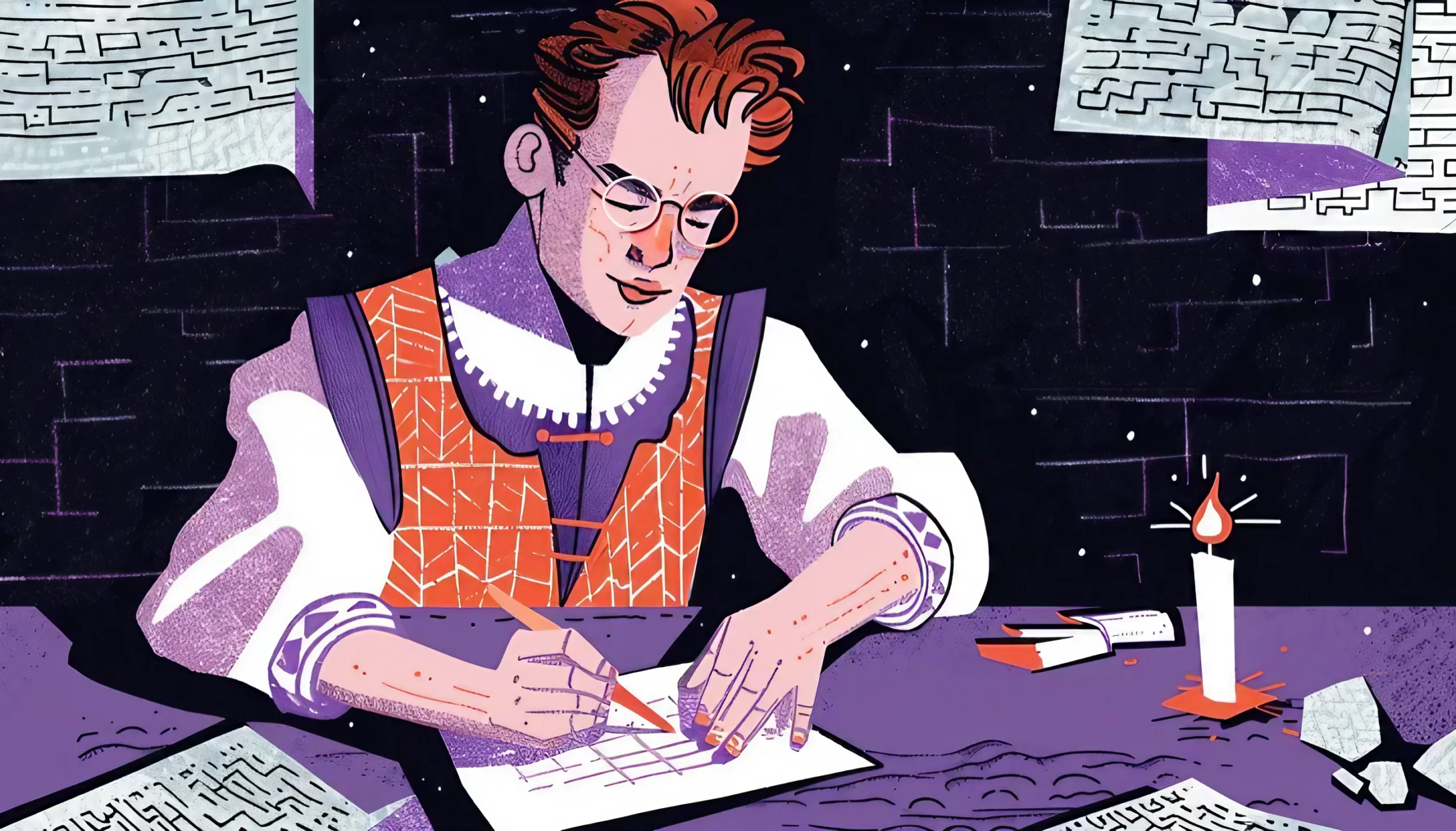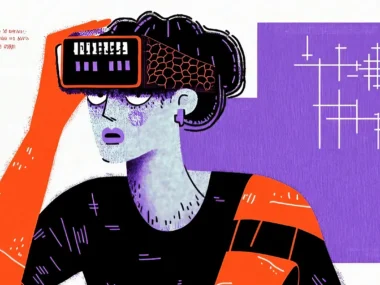When we think of UX design, storytelling isn’t usually the first thing that comes to mind. We think of functionality, aesthetics, or user flow. But here’s the secret: storytelling is what makes UX come alive. It’s the bridge that connects the user to the product, transforming a basic interaction into something memorable. Storytelling in UX design gives the user more than just a tool—it gives them an experience.
Why does this matter? Because we’re all hardwired for stories. Consider the last time a series or advertisement moved you. It wasn’t just information that gripped you; it was the way it was told. And in UX, storytelling can turn an otherwise mundane task into a journey, a simple app into a trusted guide.
So, let’s explore how storytelling fits into UX design and how you can leverage it to create experiences that not only work but also resonate deeply with users.
Beyond Functionality: Stories Tap into Emotion
There is no doubt that functional design is essential. After all, no one wants an app or website that doesn’t work properly. But here’s the catch: if all we provide is pure functionality, we’re only scratching the surface of what a product can be. Storytelling in UX isn’t about adding fluff—it’s about embedding layers of emotion, relatability, and personality. This approach transforms a simple interaction into a memorable experience that sticks with users, keeping them coming back for more.
Let’s look at Apple’s design approach as an example. Yes, Apple products are famously easy to use, but there’s so much more going on beneath the surface. Every aspect of Apple’s UX design, including font selections, animations, and product packaging, conveys a narrative about the brand and, crucially, the user’s identity when using an Apple device. Each iPhone unboxing feels special, almost ritualistic. The pristine packaging, the smooth slide of the box opening, and the first sight of that sleek, minimalist design aren’t just functional touches; they’re emotionally engaging moments designed to make you feel something powerful. Apple doesn’t just sell you a phone; they sell you an entry into a lifestyle. From the moment you pick up the device, you feel like you’re part of something refined, cutting-edge, and intentionally crafted.
This kind of storytelling in UX design goes beyond simple utility. It allows users to connect with the brand and the product on a personal level, infusing their experience with a sense of identity. They don’t just buy into a product’s functionality; they buy into the lifestyle and philosophy it represents. This emotional bridge Apple builds through storytelling makes its devices feel like an extension of the user’s personality. It taps into aspirations, passions, and even values, making every interaction feel meaningful rather than merely transactional.
But storytelling doesn’t always have to be about luxury or high-end branding. Consider Duolingo, the popular language-learning app. When users first sign up, they’re greeted by Duo, the friendly, green cartoon owl mascot. Duo isn’t just a random design choice; he’s the voice of encouragement, accountability, and sometimes a little guilt when you miss your practice! The app uses Duo to create a playful, relatable story that makes language learning feel fun and approachable. Even the notifications—”Duo” is getting a little sad you missed your lesson!”—are” crafted to evoke a gentle emotional response, prompting users to return not just out of obligation but because they feel personally connected to their language-learning journey.
The secret here is that storytelling in UX can fit any brand’s voice, from the elite and aspirational to the playful and lighthearted. Storytelling taps into human emotions such as joy, excitement, responsibility, and more, drawing users in by elevating the experience beyond mere functionality. Instead, it becomes a relatable, memorable journey that keeps users engaged and wanting to return for more.
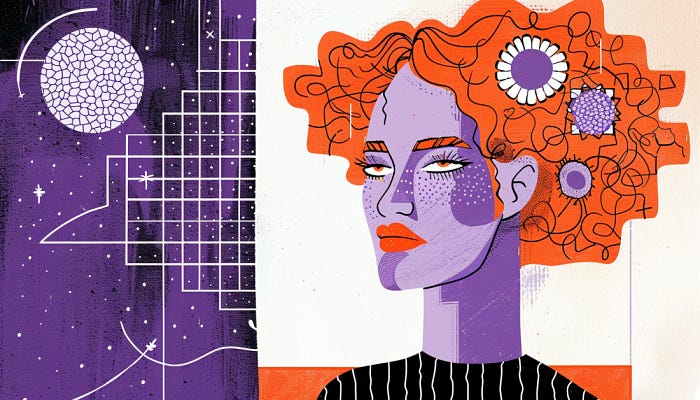
Mapping Out the User’s Story Arc
Think of every user journey as a story arc. Much like in a movie, a user’s experience has a beginning, middle, and end, with emotional beats along the way. In UX design, this story arc isn’t just something that happens by chance—it’s intentionally crafted to take users on a journey that resonates with them. Each stage of the experience is carefully mapped out to guide the user’s emotions, making every interaction feel like a meaningful step forward.
Let’s break it down with an example of a fitness app. Imagine the beginning of this user journey. A new user has just signed up, probably feeling a bit uncertain or even intimidated. They might be thinking, “Can I really stick with this?” or “Will this work for me?” Here, the goal is to immediately put them at ease, making the app feel like a friendly and supportive partner in their fitness journey. A quick onboarding process introduces them to key features, using language that’s warm, encouraging, and reassuring. The design choices here are important too—soft colors, approachable icons, and motivational language can help users feel like they’re in a safe and welcoming space.
Then comes the middle of the story arc, where the user is fully exploring the app and beginning to engage with its features. This is where they set goals, track progress, and maybe even join challenges. At this point, the user needs to feel a sense of progress and accomplishment to stay motivated. Well-placed animations and gentle nudges (like, “You’ve hit your daily step goal!”) can help sustain this motivation. Each interaction builds their confidence, giving them small victories that make them feel like they’re advancing toward something meaningful.
Finally, we reach the end of a single workout session or even the completion of a goal—whether it’s a week of exercise, a particular challenge, or a personal milestone. This is a crucial part of the story arc where the app’s design celebrates the user’s efforts. Imagine a small animation with celebratory visuals or a personalized message like, “Great job! You just completed your first week!” This feedback isn’t just nice to have; it’s a narrative device that reinforces their sense of achievement and commitment. It wraps up the experience on a positive note, making the user feel proud of their progress and excited to continue.
By consciously mapping out this story arc, you aren’t just organizing content or features—you’re crafting an emotional journey. This approach ensures that each stage of the user’s experience is designed to meet them where they are emotionally, offering encouragement, guidance, and celebration. This type of storytelling in UX doesn’t just get users from point A to point B; it makes them feel understood, valued, and inspired, turning an otherwise mundane process into an uplifting and memorable experience.
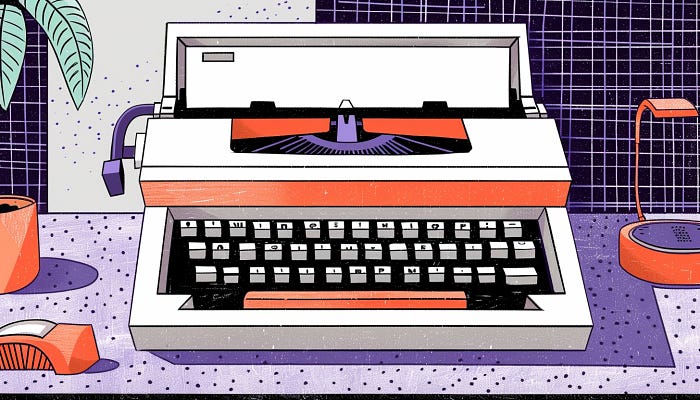
The Role of Design and Language in Storytelling
Imagine landing on a website where every button feels rigid, the colors are harsh, and the text reads like it was written by a machine. It’s efficient, maybe, but cold and impersonal. Now, picture a site with warm colors, rounded buttons, and text that feels conversational—almost like a friend guiding you along. Which one would you trust and enjoy more? The answer is almost always the one that feels more human and welcoming.
In UX storytelling, visual and verbal cues are like the punctuation that brings the narrative to life. Every choice in color, shape, and wording has a purpose, helping to create an experience that feels cohesive, intentional, and emotionally resonant. Let’s say you’re designing an app for a meditation practice. Using soothing colors like soft blues or greens, rounded edges, and a lot of open space can evoke calmness and relaxation. When paired with language that’s gentle and reassuring, the whole experience feels like an invitation to unwind and breathe rather than a task to complete.
Microcopy plays a huge role here as well. Think about those small but mighty messages that appear when users make progress: “You’re almost there!” or “Fantastic, you just hit a new milestone!” These seemingly minor pieces of text provide more than information; they act as emotional guides, encouraging users and reinforcing positive feelings. They’re like a digital cheerleader, celebrating the user’s progress in real time. Imagine using a fitness app that simply says, “Goal achieved” versus one that pops up with a confetti animation and the message, “Amazing job! You crushed your goal today!” That small touch can completely change how the user feels in that moment, encouraging them to keep coming back.
The same goes for UX copy. It’s not just about telling the user what to do; it’s about having a conversation. By adopting a conversational tone, using friendly language, and keeping things simple, you create a space that feels human and approachable. Let’s take Slack as an example. Their UX language is casual, witty, and warm. Error messages don’t feel like reprimands; instead, they often have a humorous or friendly tone. Slack’s approach makes users feel like they’re interacting with a friendly guide rather than a faceless program. This builds a sense of trust and connection, helping users feel comfortable and understood.
Design and language work together to create a holistic experience where users feel guided and supported at every step. It’s the difference between a site or app that merely works and one that feels like a digital companion. And that’s the magic of storytelling in UX—when done right, every visual element and word choice works together to craft a journey that resonates with the user, making them feel like they’re not just using a product but engaging in a meaningful interaction.

Stories Make Products Feel Relatable
In UX, trust isn’t just important—it’s foundational. If users don’t feel they can trust a product, they’re unlikely to engage with it, let alone stick around. Here’s where storytelling becomes more than just a design choice; it’s a trust-building tool that connects users to the product on a personal level. When users feel a story embedded in the design—a story that resonates with them and reflects their own experiences or desires—they feel understood, and with that understanding, trust naturally follows.
Take Airbnb as a prime example. At its core, Airbnb functions as a booking platform, yet it conveys a narrative that extends beyond the mere act of finding a place to stay. Every aspect of the Airbnb experience, from the home page to the host profiles, is crafted to evoke a sense of exploration, community, and belonging. Instead of feeling like just another travel site, Airbnb makes users feel like they’re stepping into a world of unique experiences and personal connections. Hosts aren’t just names on a list; they’re individuals with homes full of character, often sharing stories about their spaces and the neighborhoods they live in. This approach transforms the user’s experience from “booking a room” to “discovering a place and its people,” creating a sense of intimacy and authenticity.
The visual design of Airbnb also reinforces this narrative. Soft, inviting colors, candid photos of real homes, and a design layout that emphasizes personal stories and user reviews all work together to create a sense of warmth and trustworthiness. The images aren’t staged or overly polished; they’re real, reflecting the genuine experiences users can expect. By weaving these personal stories into the platform, Airbnb makes users feel as though they’re not just customers but part of a larger community. This storytelling approach fosters a feeling of safety and belonging, making users feel like they’re welcomed guests in someone’s home, not just anonymous customers.
Storytelling also helps Airbnb establish an emotional connection that can be particularly impactful for first-time users who may feel hesitant about staying in a stranger’s home. Seeing photos of the hosts, reading about the history of a place, or even learning about nearby hidden gems helps bridge that gap, reducing uncertainty and building trust. Airbnb’s story is all about creating a sense of “home away from home,” which makes the platform more relatable, especially for users seeking an authentic travel experience.
This approach to storytelling can be applied to countless other UX designs. When a product makes users feel seen and understood, they’re far more likely to invest their trust and loyalty. Through storytelling, UX designers can transform digital products from faceless tools into relatable companions that users feel safe with and connected to. This relatability doesn’t just enhance the user experience—it strengthens brand loyalty, ensuring that users return time and time again because they feel part of something larger. In the end, storytelling in UX isn’t just about adding charm; it’s about creating a shared journey that resonates on a personal level, building trust, and fostering long-term relationships.
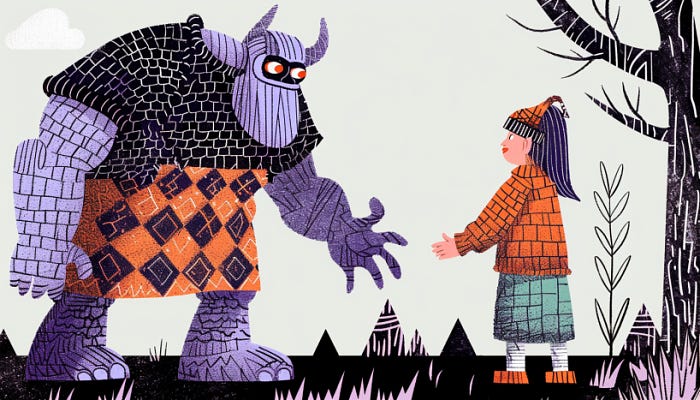
Putting the User’s Story Front and Center
Here’s a question: Who’s the hero of your product’s story? Spoiler alert—it’s not the product itself; it’s the user. In UX, making the user the protagonist means designing with their experiences, needs, and aspirations as the focal point. User-centric storytelling shifts the design narrative, transforming users from passive participants to active heroes of their own journey. This approach empowers users, making them feel valued, seen, and in control of their experience.
Take Duolingo as an example. This language-learning app doesn’t just deliver vocabulary drills and grammar lessons; it weaves a narrative where users are learners embarking on a meaningful language journey. Every aspect of Duolingo’s design, from setting daily goals to tracking progress, builds a story of personal growth and achievement. Friendly reminders celebrate their “streaks” or gently encourage them to get back on track, reinforcing that every step forward, no matter how small, is an important part of the journey. Even subtle features like “leveling up” or earning badges contribute to a sense of adventure and progress, making the user feel like a determined character in their language-learning story.
By placing users as the central characters, Duolingo turns what could be a dry, instructional experience into an engaging quest for self-improvement. Instead of feeling like they’re following a program, users feel like they’re achieving milestones, each new lesson bringing them closer to fluency. The design itself is supportive and encouraging, acting more like a friendly guide than a rigid instructor. In this way, Duolingo makes users feel like active learners, driving their own story of progress, persistence, and accomplishment.
When we frame users as the heroes of their own story, the design becomes about them—their goals, their motivations, and their experiences. Take Headspace, a meditation app, as another example. Instead of presenting meditation as just another task, Headspace personalizes the journey to mindfulness. It frames each session as a “moment for you,” using visuals of soft, calming animations and language that speaks directly to the user’s state of mind. Headspace makes the user feel like they’re on a path of self-care and growth, turning each meditation into a rewarding step toward inner peace. Through this user-centered storytelling, Headspace creates an experience that feels deeply personal and relevant.
By designing with the user’s story in mind, we create a narrative where users feel in charge, which is ultimately empowering. They’re no longer just navigating through screens; they’re on a journey toward a goal that matters to them. Every design decision—whether it’s encouraging language, celebratory micro-interactions, or progress-tracking features—reinforces their role as the protagonist, motivating them to continue the journey.
And who doesn’t want to feel like the hero of their own story? This sense of ownership doesn’t just enhance engagement; it builds loyalty. When users feel that the experience is genuinely about them, they’re more likely to return because they feel understood and appreciated. Designing with the user as the hero isn’t just good UX; it’s a powerful way to create experiences that resonate on a deeply personal level, fostering a connection that keeps users coming back.
Turning Users into Brand Advocates
Good stories stick. Great stories are shared. When users resonate with a brand’s story, they become loyal advocates. Storytelling in UX design doesn’t just improve individual experiences; it builds relationships that keep users coming back.
Brands like Spotify and Netflix are masters of this. They don’t just provide content; they create personalized journeys that reflect users’ tastes, moods, and personalities. By consistently delivering experiences that feel tailored to each individual, they’ve managed to foster a loyal, almost fanatical user base. Users don’t just enjoy these platforms—they feel connected to them on a personal level.
So, how can you use storytelling to build loyalty? Focus on crafting experiences that feel authentic and resonate with your audience’s values and desires. By giving users a story they can relate to, you encourage them to see your brand as part of their own story, fostering a sense of loyalty that goes beyond mere functionality.
Remember, storytelling in UX design doesn’t have to be complicated—it’s about making users feel seen, valued, and engaged. Start small. Think about one area of your product where a little story could go a long way. Maybe it’s a friendly welcome message, a progress tracker that celebrates small wins, or a bit of microcopy that sounds like a friend cheering them on. Try it out, see how users respond, and build from there. With each thoughtful touch, you’re turning your product into more than just a tool—you’re crafting an experience they’ll remember and want to return to. Happy designing!




